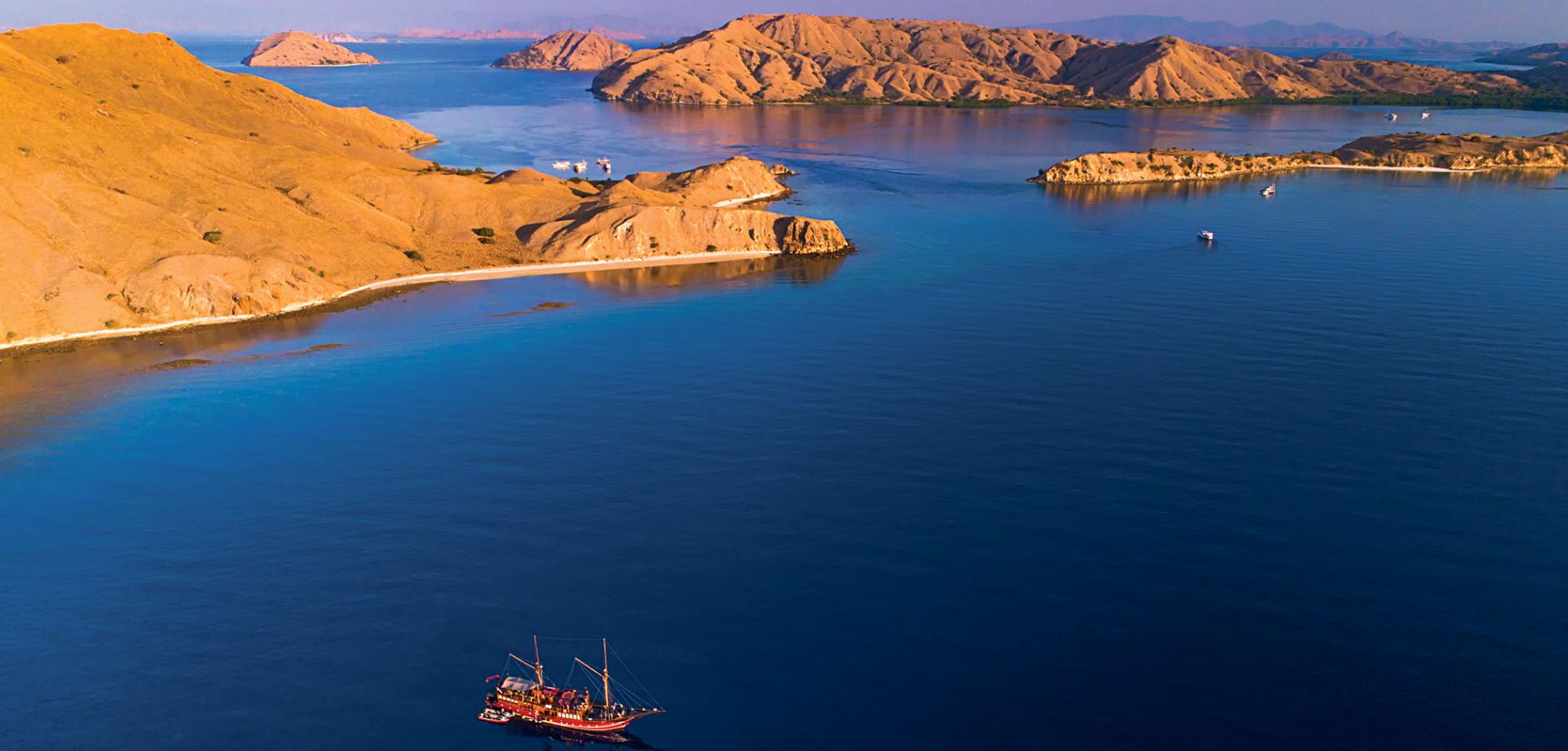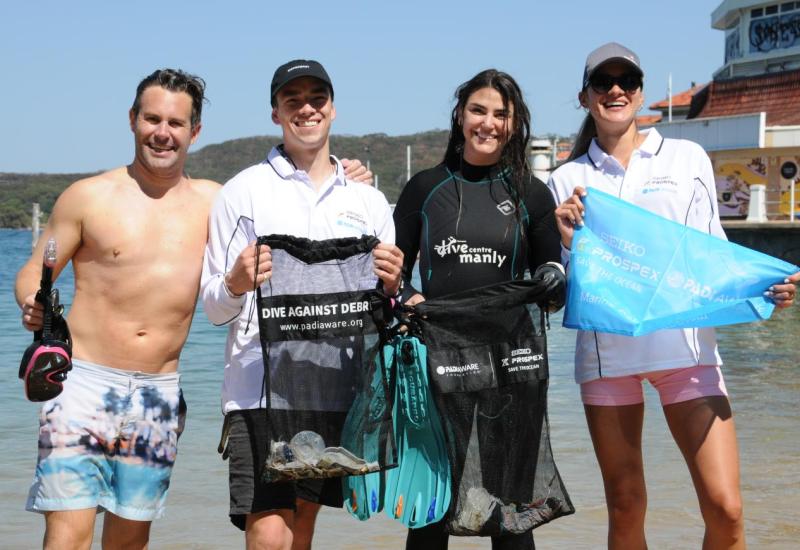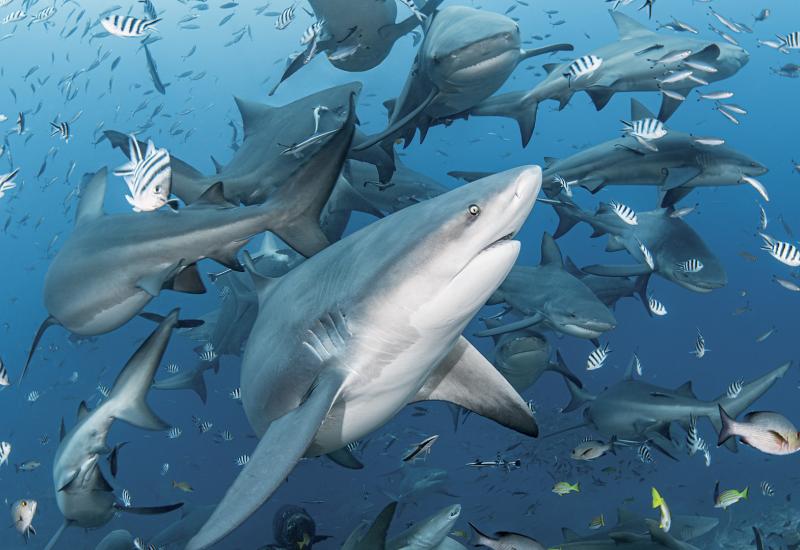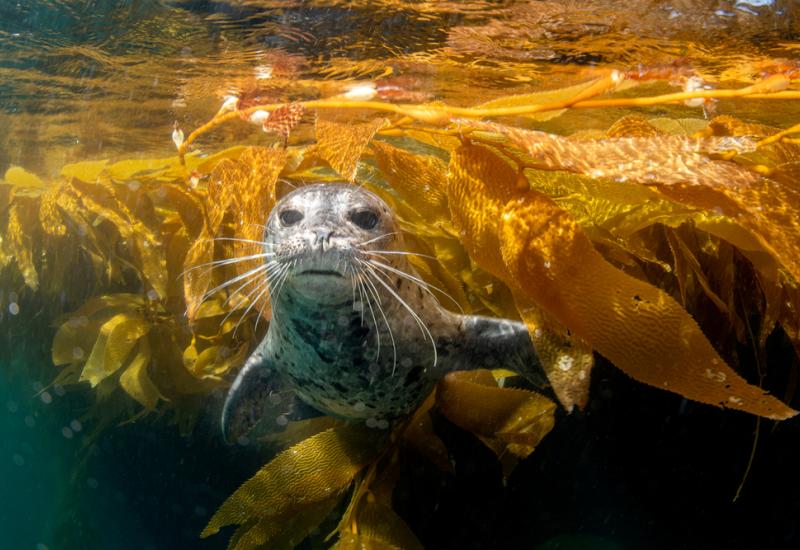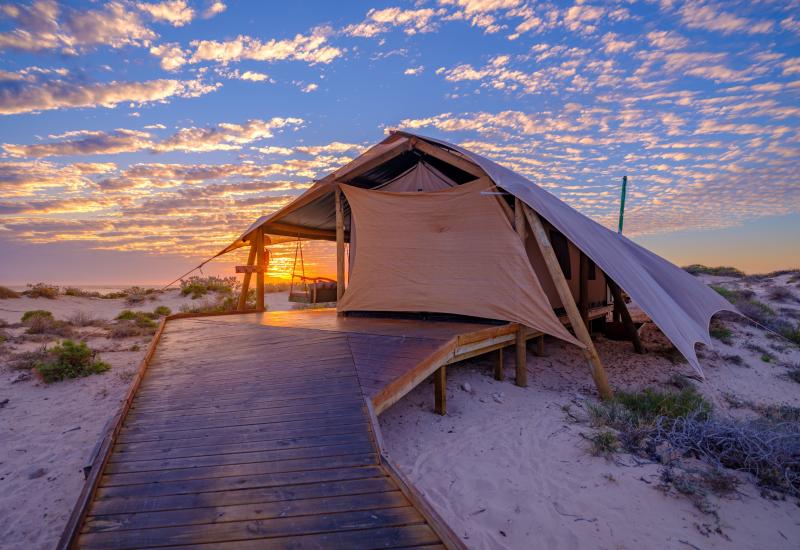In the Realm of Dragons
William Douglas Burden was determined to catch a dragon.
“I desired dragons with a profound desire. Of course, I in my timid body did not wish to have them in the neighborhood. But the world that contained even the imagination of Fáfnir was richer and more beautiful, at whatever the cost of peril.” — J.R.R. Tolkien
After a lengthy journey from New York, Burden and the crew of the steamer SS Dog were close. They could see the island of Komodo — “a vast mass of torn and splintered mountains … a fitting abode for the great saurians we had come so far to seek,” as he would later describe it — but one thing stood in the way: the ripping currents of Lintah Strait. Positioned at the convergence of the Indian Ocean and Flores Sea, the waters that produce world-class dives today were infamous at the time of Burden’s 1926 expedition.
Fueled by a desire to conquer something ancient and untamed — and a heavy dose of hubris — Burden ordered his crew to plunge ahead.
“A more dangerous passage probably does not exist,” he wrote in Dragon Lizards of Komodo. “Already I could see the water boiling ahead.” But they managed the 13-knot current perfectly, reaching the dragons’ lair.
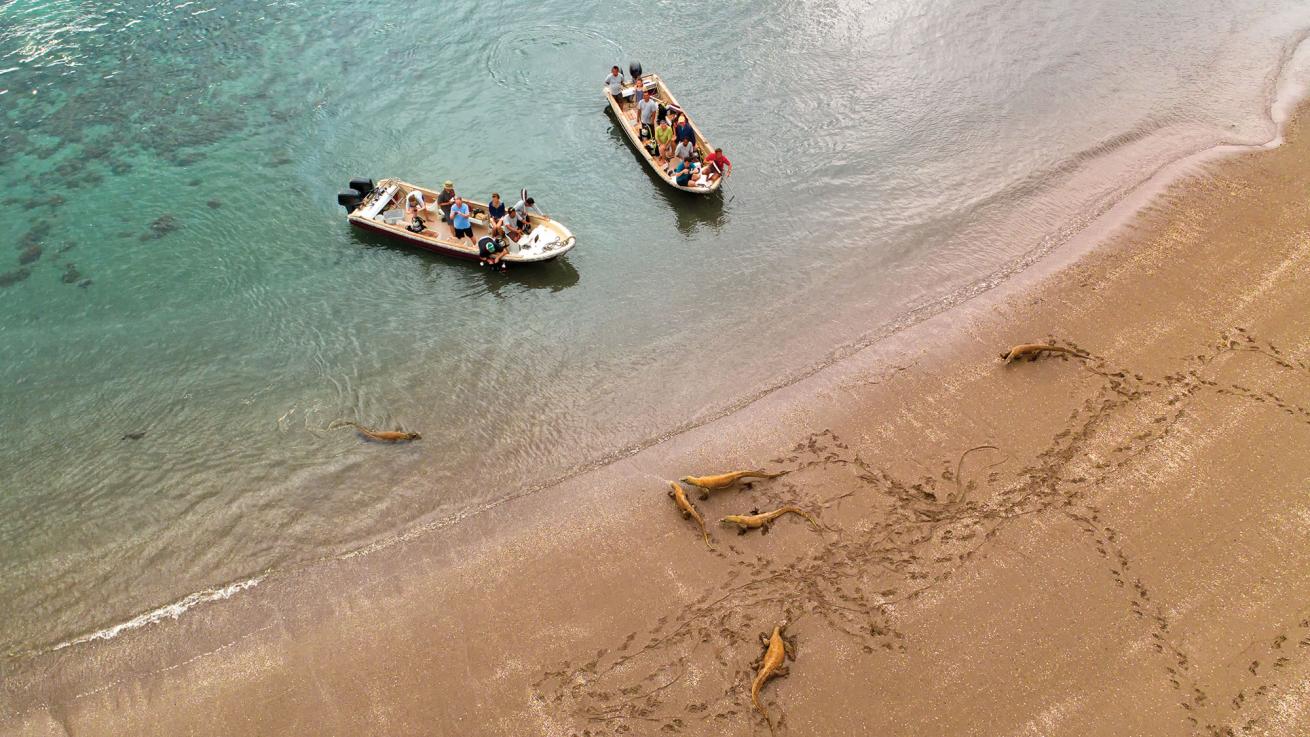
Beth WatsonDragons approach the water’s edge at Rinca island.
Like a Box of Chocolates
Squinting in the sun, I watch Lisa Herding duck-dive into the water, reading the current that troubled Burden nearly a century ago. But for Herding — unlike Burden — luck has no place in the process. One of two cruise directors aboard the luxury liveaboard Arenui, she knows these currents like few others.
“No, that’s not right,” she says, grabbing the line on the side of the 25-foot fiberglass tender from which we dive. “This way.” We cruise for just a few second as she scans the water: “Stop!” We’ve reached the exact drop-in spot.
Precision is key in Komodo. The difference between dropping in on the sheltered side of a pinnacle like Crystal Rock and the exposed side could be the difference between the dive of your life and a one-way ticket to the open ocean.
We make a negative entry, kicking hard to the pinnacle below. As soon as we reach the rock, I take a second to get my bearings and check my depth. I look up to complete madness unfolding around me — and Burden thought he’d escaped the big city.
A school of Moorish idols descends in a diagonal line to my right. A massive jack works its way through traffic to reach the pinnacle, while a camera strobe goes off, cementing its image forever. A whitetip reef shark cruises by in the blue, keeping tabs on its domain. Schooling fusiliers and surgeonfish fill the spaces in between. Massive barrel sponges, far-reaching table corals, and sprawling sea fans decorate this site, while fish buzz in and out of each like it’s a midtown hotel.
We’ve parachuted into Times Square at rush hour. I look to my right and see that I’ve become perfectly aligned with a school of surgeonfish as we work our way up toward the peak of the pinnacle. We’re rudely cut off by fish after fish, which seem to have 99 problems, of which I am certainly not one. Why would I be? It’s 5:30 on a Friday evening, and the A train is about to depart for Brooklyn, apparently.
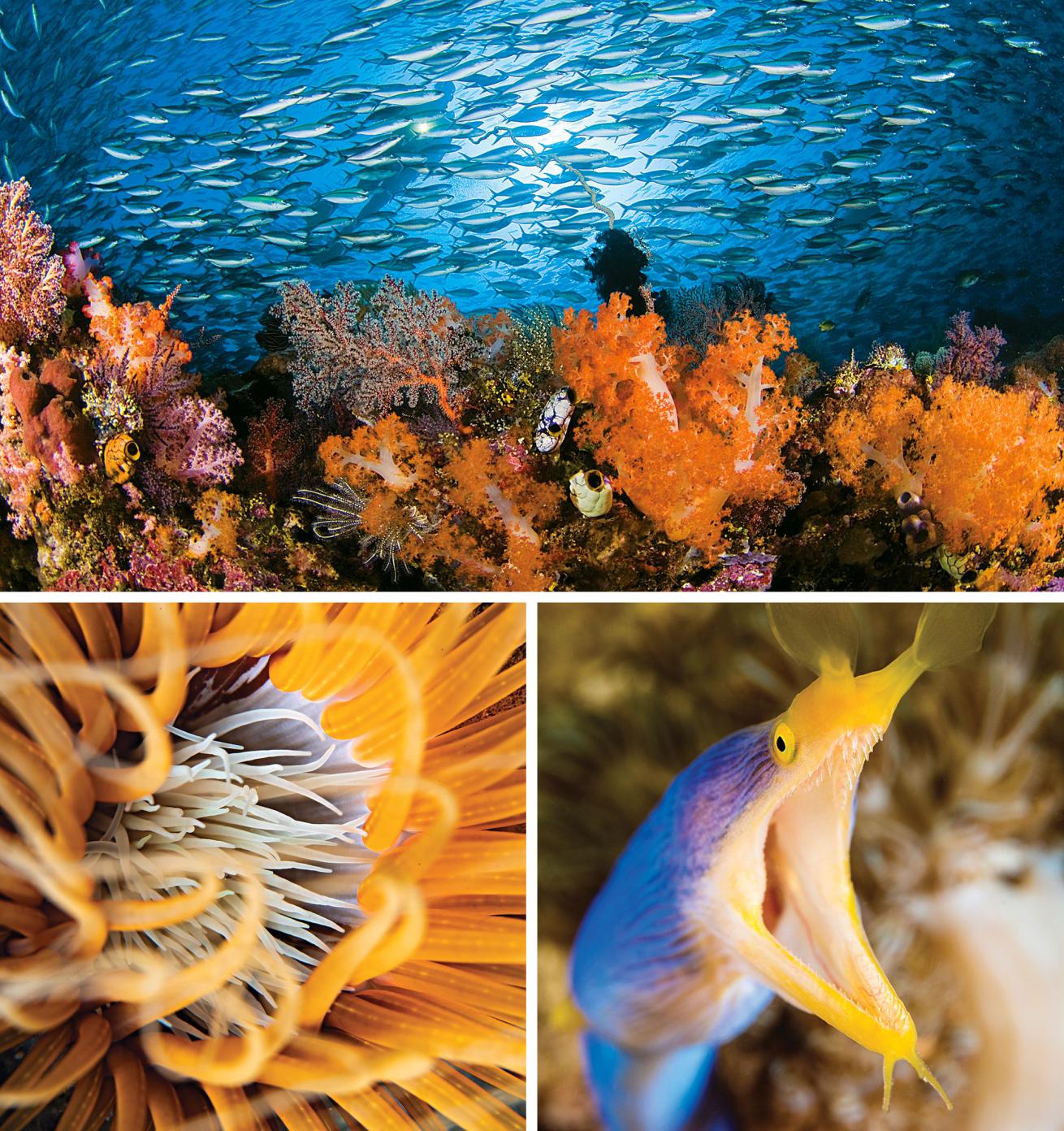
David Fleetham/OceanwideImages.com; Brandon Cole; Jennifer O’NeillClockwise, from top right: Fusiliers cover a soft-coral reef; a ribbon eel peeks out of its burrow; a tube anemone blooms at Cannibal Rock in south Komodo.
I see a pink anemonefish peek out of its home, clutching its pearls at the frenzy overhead. A solitary unicornfish buzzes by — late for work, probably. I steal a glimpse of a squirrelfish hiding beside bubble coral, although it surely saw me coming from miles away with its giant eyes.
Herding — whose hand signals, tank clangs and slate notes alerted me every few minutes on past dives — has completely stopped ID’ing interesting specimens for me. Instead, she simply turns around 20 minutes into the dive with two hands to her head: boom! — mind-blowing.
Brisk fin kicks are required to cross the valley between the site’s two plateaus. In the middle of the connecting trench, table corals more spacious than a Manhattan studio apartment span the gap.
More of the same delights my senses on the other side. But when we cross over the pinnacle, we’re greeted by a new sensation.
Huge fish are suspended in the blue: barracuda, giant trevally, tuna and a few whitetip reef sharks. A gray reef shark lurks just beyond clear view, tempting us with the thought of what else might be out there.
That’s the coolest thing I’ve ever seen, I think as I pass my gear up and board the tender at the surface. I don’t understand why we can’t keep anchor and dive here for the rest of the week.
But the dives to come illustrate why I’m not responsible for planning the itinerary.
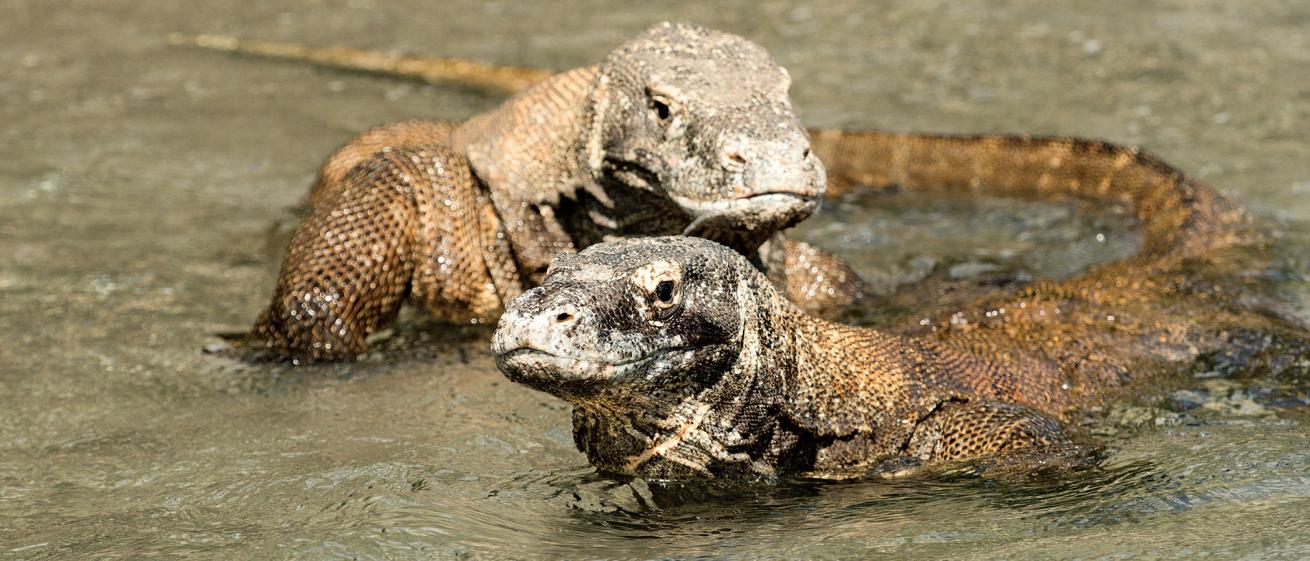
Fabien MichenetThe island’s famous dragons.
It's the Little Things
At Black Diamond off Sangeang Island, we sift through black sand — courtesy of the active volcano’s 2014 eruption — for the little stuff. “It’s like the best game of Where’s Waldo?” says fellow traveler Nancy Howard, of South Hadley, Massachusetts.
Waldo has no shot at tricking our eagle-eyed guides. Arenui’s crew of 23 serves a maximum of 16 guests, and many of the dive guides — one for every three to four divers on this liveaboard — cut their teeth in Lembeh Strait, making them macro wizards.
One dive bears sightings of five species of nudibranch — the slug version of Pikachu (Thecacera pacifica) being my favorite — a pygmy seahorse, mantis shrimp, porcelain crab, juvenile lionfish and whip coral goby.
A scorpionfish settles on the reef in front of me. I glance away and back in a split-second; it’s already dramatically changed colors from light brown to a deep purple to match its new environment. That can’t be, I think, but further study confirms this as the fish more slowly refines its new pigment.
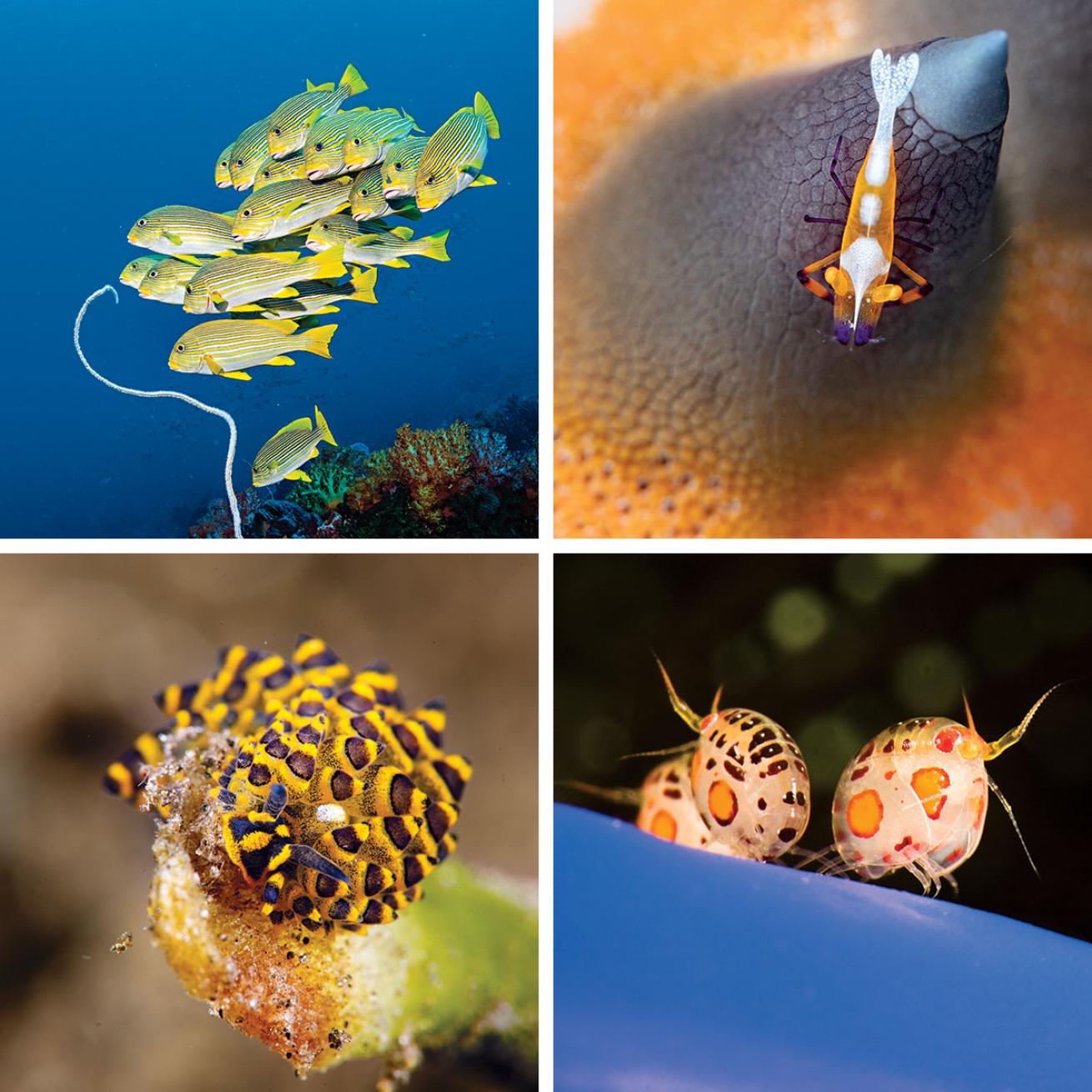
Jennifer O’Neill; David Fleetham/OceanwideImages.com; Fabien Michenet; Martin StrmiskaClockwise, from top right: emperor shrimp, isopods, nudibranchs, and French grunts.
A later dive at the Aquarium off Gili Lawa Laut in north Komodo produces classic misdirection. I don’t know whether I should hang around and watch a hawksbill sea turtle comically munch on a sponge — it burrows its head deep into a crevice and violently pulls back a chunk, using its fins for leverage to yank the snack away — or slowly circle the numerous coral bommies buzzing with reef fish and covered in sexy shrimp, nudis and more.
Herding motions toward another hawksbill ascending to the surface for a breath, but as I turn to look, there’s a tug on my fin. I see another diver pointing into the blue — manta!
It’s a memory that could last a lifetime — or six — as three different mantas make pass after pass throughout the dive.
At Tatawa Besar in central Komodo, we discover why the site is nicknamed “Orange Grove.” An action-packed drift dive — including run-ins with a bamboo shark and a close encounter with a manta — ends with us soaring over a field of staghorn coral stretching as far as the 80-foot viz will allow us to see.
Komodo, I come to realize, is no one-hit wonder.
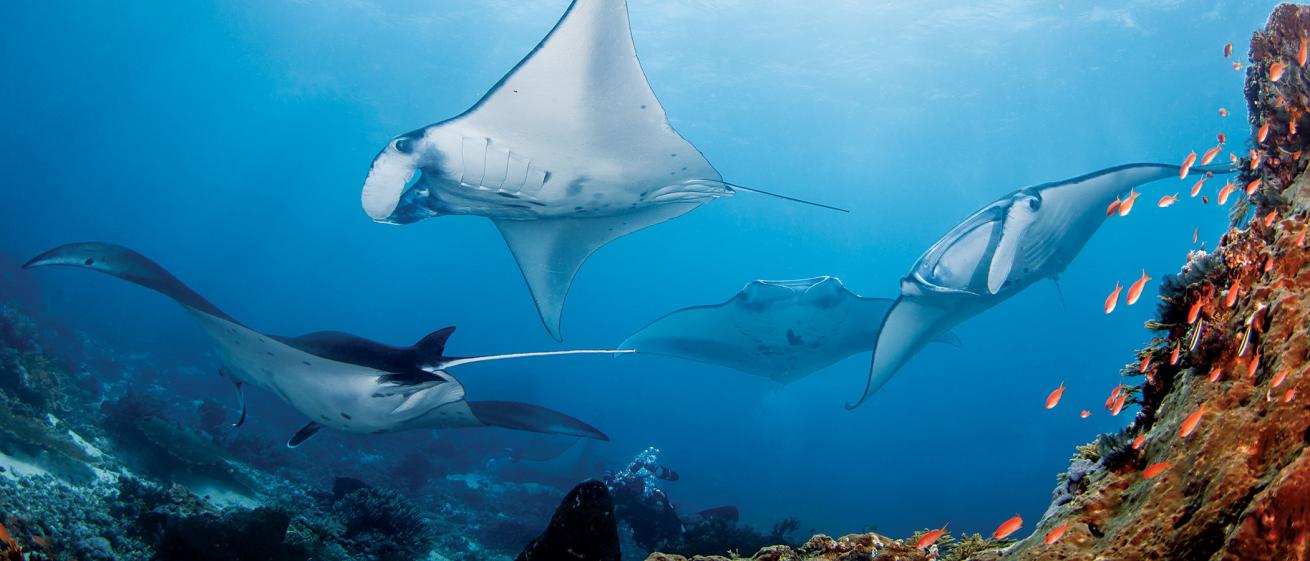
Andrew SallmonMantas at the site Mawan; this region attracts mantas with its flow of nutrients from the Flores Sea and Indian Ocean.
The Element of Surprise
Burden, like many naturalists of his era, was a rich man who felt called to remote stretches of the globe. He hunted animals for research and, as he saw it, conquered lands as a Western man that were actually quite inhabited.
But Burden was lured by the thought of dragons — much like Tolkien and the author of Beowulf and so many before. Not because they truly live on Komodo (“large monitor lizard” would be a more fitting description), but because they represent the great mystery of the natural world — what could be, much like the draw of the deep for Cousteau.
“It was a perfectly marvelous sight — a primeval monster in a primeval setting — sufficient to give any hunter a real thrill,” Burden wrote of the Komodo dragon. “Had he only stood up on his hind legs, as I now know they can, the dinosaurian picture would have been complete.”
“O to be a dragon, a symbol of the power of Heaven — of silkworm size or immense; at times invisible.” — Marianne Moore, O To Be A Dragon
Hidden behind blinds with dead deer used as bait, Burden and his crew — which included his wife, Catherine — killed several of the dragons, and brought three back to New York City alive.
The skins of these lizards can still be seen in the American Museum of Natural History; the live specimens died shortly after arriving at the Bronx Zoo. Burden’s quest inspired King Kong (1933); the wanderlust that fueled him inspires travelers today.
Just ask the experts. Cruise directors Herding and Guillermo Alcover were trained in law and engineering, respectively, in their native Spain. Ready for a change of scenery and careers in diving, they sought work in a location that would hold their interest.
“You can find anything here. This past summer, divers saw a megamouth shark in the channel,” Herding says. “You can be looking at a pygmy seahorse in Coral Gardens while a manta passes overhead.”
“In Raja Ampat, the coral is amazing, but we don’t have much muck diving or critters. In Alor, there’s beautiful muck diving but not as much nice coral,” Alcover says. “In Komodo, we have everything. One of the reasons is the upward currents from the Indian Ocean in the south, flowing into the channel with the warm water in the Flores Sea, and bringing in so many nutrients. The area is so small compared with Raja Ampat or Alor, and you have amazing drift, macro dives, beautiful coral, a lot of fish. It’s special.”
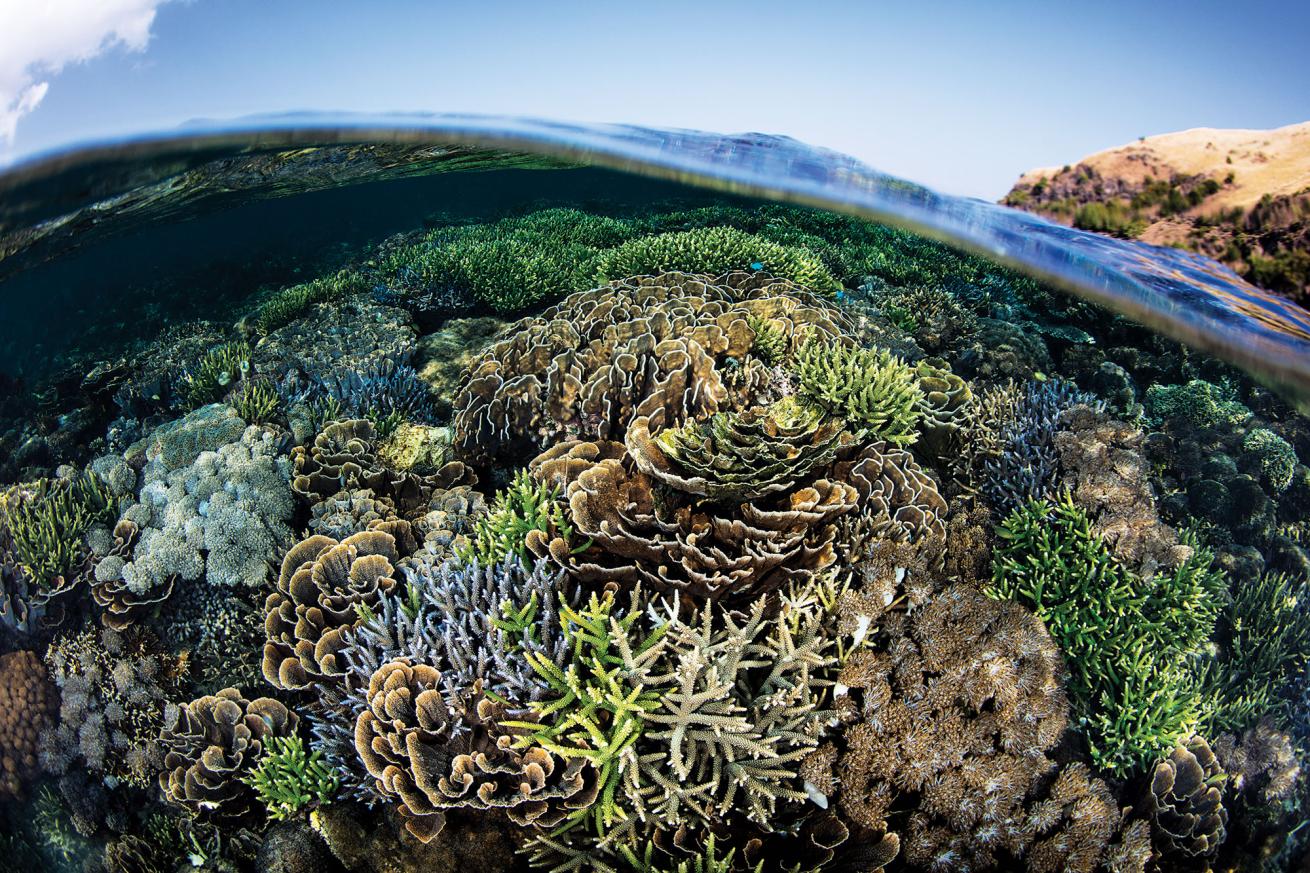
Ethan DanielsA diverse array of reef-building corals just off Banta Island.
Losing Sleep
I hold my light to my pressure gauge to make it glow and take a glance: 1,000 psi. This night dive at Wainilo is about to be a wrap, and my thoughts drift to the warm towel and hot chocolate that will greet me on board.
But then Alcover, my guide for the dive, receives a signal and fins quickly toward another group of divers. We approach a collection of lights pointing at one spot in the sand. Something’s going on. As we draw near, Alcover reads a message from another guide. Bubbles quickly emerge from his reg. He’s excited.
I squint to read the slate: “Coleman’s Melibi.” Alcover plants his pointer in the sand for reference and takes a close look.
He turns around with a wild look in his eyes, motions “stay here,” and darts back in the direction of divers who have cameras.
Burden got it wrong. It’s not the promise of a fire-breathing creature that makes Komodo special. It’s the ability to drop in the water, truly unprepared for what might come next.
I fin closer to see what the fuss is about. Just a few inches from Alcover’s pointer is a medium-size nudibranch. Completely transparent, it looks like a living knot of floss. The slate message makes sense as I remember photos of this extremely rare slug. This is Melibe colemani, and it’s a big deal.
First discovered by Neville Coleman and officially named by Marta Pola and Terry Gosliner in 2012, this species of nudibranch is uncommon — especially outside Lembeh Strait.
Alcover, a veteran of the dive industry with a decade of professional experience, is absolutely giddy. He makes careful note of where the nudi was spotted — these creatures don’t move quickly. On our next night dive, he returns with a camera rig.
“I’ve been looking for that guy for a long, long time,” he says the next day, with a million-watt smile. “That night, it was hard for me to sleep. I kept looking at the photo on my phone.”
Alcover proudly posts the discovery on his Facebook page, drawing the envy of his friends. He can’t help but grin talking about it on the boat.
Burden got it wrong. It’s not the promise of a fire-breathing creature that makes Komodo special. It’s the ability to drop in the water, truly unprepared for what might come next.
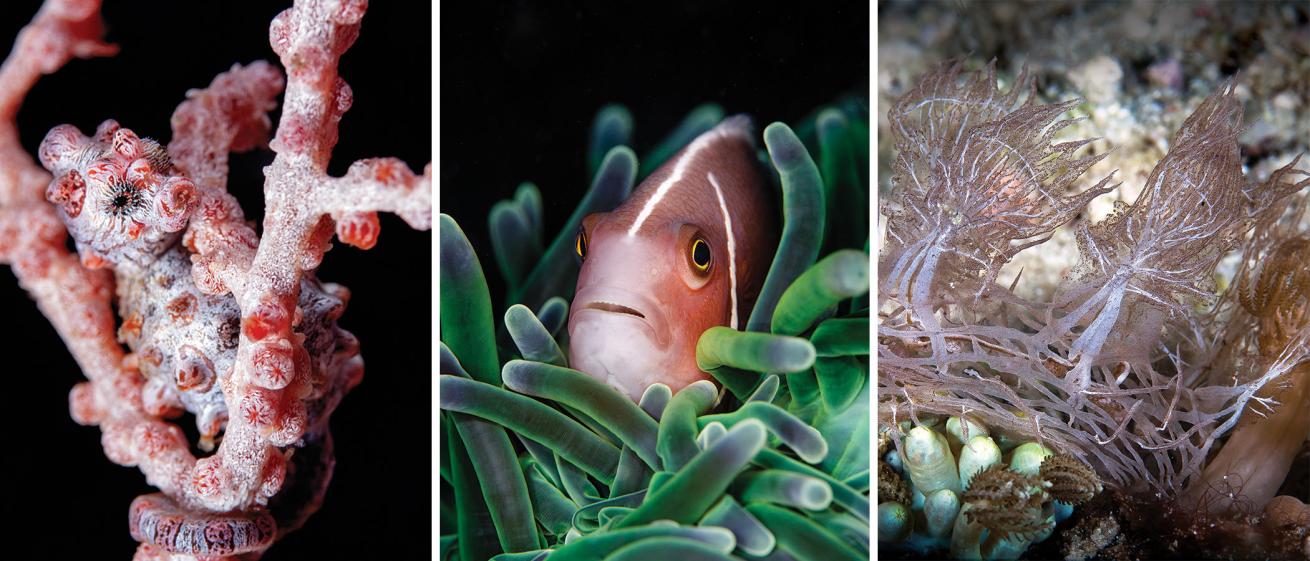
Tanya G. Burnett; Allison Vitsky Sallmon; Arenui Boutique Liveaboard/Guillermo AlcoverLeft to right: A pygmy seahorse clings to its gorgonian home; a pink anemonefish in Horseshoe Bay; the nudibranch Melibe colemani on a night dive at Wainilo.
My Date with Dragons
Rinca island is known for one thing and one thing only — and that’s made abundantly clear as I pass under an arch that’s held up by two 7-foot statues of Komodo dragons. The Jurassic Park theme plays in my head as I hope our experience differs from the movie.
Outside that display, Rinca doesn’t boast much in the form of infrastructure, but our first sighting comes by a small wooden building.
Lying in the sun just along the main path are two small Komodo dragons — despite their modest length at about 5 feet, our group is still on edge. The dragons’ deadly reputation surely has something to do with it, and the problem is compounded by the fact that a wooden stick is the only thing standing between us and them.
The park rangers accompanying those who hike through Rinca island are armed with 5- to 6-foot-long sticks that have a forked end. Komodo dragons tend to concede to what they believe is the tongue of a much larger, more impressive creature. I trust our ranger as he leads our 30-minute hike up a hill that overlooks beautiful Loh Buaya — Bay of Dragons — but that doesn’t totally ease the fear of everyone in our group. We skittishly snap photos of the dragons, chattering about this once-in-a-lifetime experience, and repeat the process again when we see a larger female resting in the shade about five minutes later. But the best photo op comes at the top of the hill overlooking the emerald bay.
It’s the end of mating season, so most of the lizards are off the main path with their nests, says our guide. We see three lizards that day, but it’s enough to check this off the bucket list.
NEED TO KNOW
When to Go: Arenui visits Komodo from May to early October.
Dive Conditions: A full Komodo itinerary includes dives in north and central Komodo, where the temperature averages 84 degrees F and visibility ranges from 40 to 100 feet, and in south Komodo, where colder water from the Indian Ocean drops the average temperature about 5 degrees.
Operator: Arenui is a 140-foot classic Indonesian-style wooden vessel, with a 30-foot beam. The boat is hand-crafted from 12 types of wood — much of it recycled and locally sourced. The decor reflects local Indonesian culture, with a carving on the stairs depicting the Hindu Ramayana story, and each room featuring local art and themes. The ship’s beautiful design is outdone by the crew’s service, including five meals a day with ample options, and a complimentary 30-minute massage.
Price Tag: An eight-night Komodo excursion starts at $5,040; park fees, port fees, fuel surcharge and nitrox are not included.

